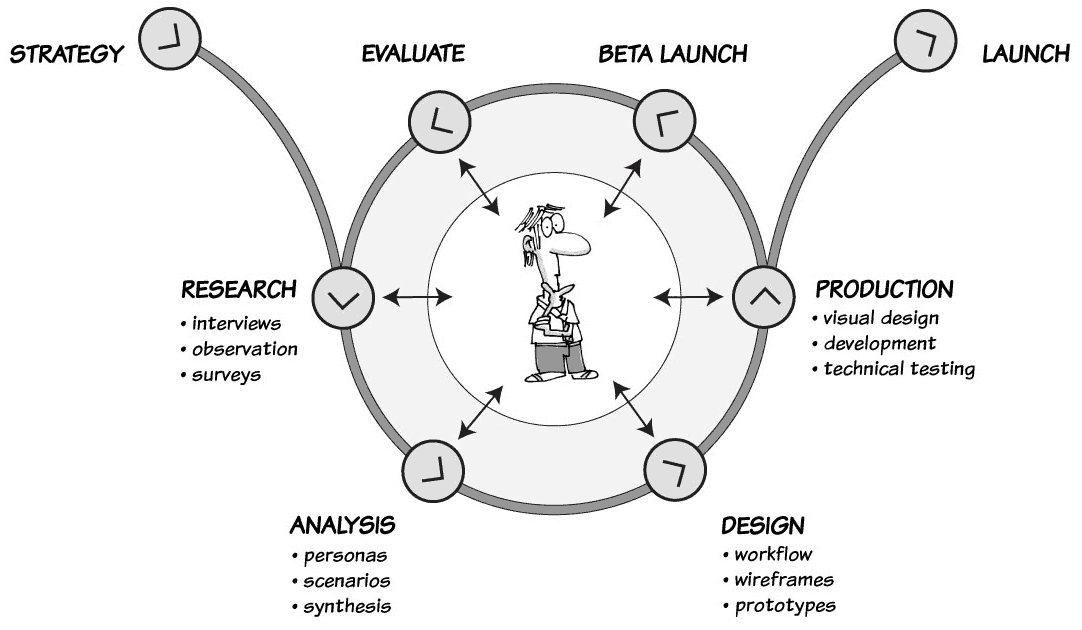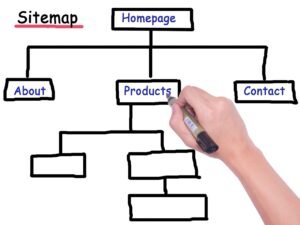Introduction: Why Process Matters in UX Design
The UX design process is the backbone of every intuitive digital product. Behind every seamless website, mobile app, or SaaS platform lies a well-structured process that goes beyond aesthetics—it focuses on usability, clarity, and functionality.
Whether you’re launching an eCommerce store, building a product dashboard, or redesigning a portfolio site, understanding the UX design process is crucial. This step-by-step guide is crafted for startup founders, marketers, solo creators, and business owners who want clarity on how great design really happens.
Step 1: User Research — Start with the Problem
Every effective UX design process starts with the user. Before opening Figma or writing a line of code, you need to understand:
-
Who are your users?
-
What specific problems are they facing?
-
What actions should they be able to complete easily?
Tools to use:
-
Google Forms (for surveys)
-
Hotjar or Microsoft Clarity (for behavior tracking)
-
Competitor website analysis tools
Outcome: A data-backed understanding of your users’ goals, frustrations, and expectations.
Step 2: Site Map and User Flow — Blueprint Before Building
Think of this step as your digital roadmap. A site map outlines your pages, while user flows chart how someone moves through your site or app.
Deliverables:
-
A basic site map (home, product, blog, contact, etc.)
-
Key user journeys (e.g., Homepage → Product → Cart → Checkout)
-
User decision trees
Goal: Ensure every user can find value quickly, with zero confusion.
Step 3: Wireframing — Low-Fidelity, High-Impact Design
Wireframes are essential to the UX design process. They are black-and-white layouts showing structure without any visuals or branding.
Tools to use:
-
Figma
-
Balsamiq
-
Whimsical
Focus on:
-
Clear information hierarchy
-
CTA (Call to Action) visibility
-
Navigation clarity
Pro Tip: Avoid distractions like colors and fonts at this stage—just focus on structure and flow.
Step 4: High-Fidelity Design — Bring Your Vision to Life
Once wireframes are approved, you can turn them into full-color, branded mockups. This step adds the visual identity that defines your product.
Elements to include:
-
Brand colors, logos, and typefaces
-
Product imagery and illustrations
-
Microinteractions and hover states
Design Tools:
-
Figma (primary tool)
-
Adobe XD or Sketch (optional)
Check for:
-
Strong visual hierarchy
-
Accessible color contrasts
-
Consistent spacing and layout
Step 5: Prototyping and Feedback — Test Before You Build
Use your high-fidelity designs to create a clickable prototype. This allows you and your stakeholders to experience the flow and functionality before development begins.
What to test:
-
Are all buttons and links working intuitively?
-
Is navigation smooth on both desktop and mobile?
-
Are animations and micro-interactions functioning clearly?
Tools to test:
-
Figma’s native prototype tool
-
Maze or UsabilityHub for user feedback
Step 6: Development and Launch — Build What You Designed
Now it’s time to bring the design to life. If you’re working with developers, ensure a clean handoff. If you’re building it yourself:
Platforms to use:
-
WordPress + Elementor (low-code)
-
Webflow (no-code)
-
Custom code (VS Code + React, Vue, etc.)
Best Practices:
-
Optimize image sizes
-
Use proper image alt text for SEO
-
Ensure full mobile responsiveness
Step 7: Post-Launch Testing — Real Feedback Matters
Your UX design process doesn’t end at launch. Real users will interact with your site in ways you can’t always predict.
After launch, do the following:
-
Monitor user analytics (Google Analytics, Clarity, Mixpanel)
-
Conduct speed and performance tests (PageSpeed Insights, GTMetrix)
-
Gather live user feedback (via chat, email, or surveys)
Iterate every 3–6 months based on this real-world usage.
Final Thoughts: Good UX is a Continuous Process
The UX design process is not a one-time checklist—it’s a continuous cycle of research, design, testing, and improvement. When done right, it not only makes your product more usable but also increases trust, engagement, and conversions.
Whether you’re a solo entrepreneur or part of a growing team, embracing a thoughtful, user-first design process can set your product apart in today’s crowded digital world.


